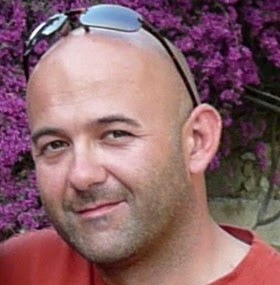Julian Stone
age ~90
from Seattle, WA
- Also known as:
-
- Julia N Stone
- Joshua Stone
- Jo Stone
- Jeff Stone
Julian Stone Phones & Addresses
- Seattle, WA
- 3 Shelterview Dr, Staten Island, NY 10304 • 7187206631
- Dallas, TX
- Aurora, IL
- Brooklyn, NY
- Richford, NY
Us Patents
-
Neodymium Oxide Doped Yttrium Aluminum Garnet Optical Fiber
view source -
US Patent:40408906, Aug 9, 1977
-
Filed:Jun 27, 1975
-
Appl. No.:5/591178
-
Inventors:Charles Andrew Burrus - Fair Haven NJ
Julian Stone - Rumson NJ -
Assignee:Bell Telephone Laboratories, Incorporated - Murray Hill NJ
-
International Classification:B01J 1718
B01J 1736 -
US Classification:156605
-
Abstract:There is disclosed a technique for growing, from a melt, doped single-crystal fibers for use as lasers or other active or passive optical devices of a size that is compatible with proposed optical fiber communications systems. A rod of undoped material has deposited thereon, by mechanical means, a powder or a slurry of a compound of the active ion or other dopant. A melt is formed at the end of the rod with a laser beam and a reduced diameter doped single-crystal fiber is grown or drawn from the melt by pulling with a wire or, when desired crystalline orientation is needed, by pulling with a pointed and oriented seed crystal. The pulling step, at least in the specific case of a neodymium-doped yttrium aluminum garnet (YAG) fiber, is repeated a plurality of times with approximately a 3:1 diameter reduction each time in order to obtain the desired fiber size; but only one deposition of the dopant compound is needed.
-
Magneto-Optic Modulator Using Dielectric Mirrors
view source -
US Patent:42393370, Dec 16, 1980
-
Filed:Jun 8, 1979
-
Appl. No.:6/046954
-
Inventors:Joe C. Campbell - Middletown NJ
Julian Stone - Rumson NJ -
Assignee:Bell Telephone Laboratories, Incorporated - Murray Hill NJ
-
International Classification:G02F 109
-
US Classification:350151
-
Abstract:A magneto-optic modulator of the bounce-cavity type is disclosed wherein the mirrors that are attached to the garnet crystal to provide the reflections are multilayered dielectric mirrors. By polarizing the input beam such that its E vector is perpendicular to the plane of incidence substantially total reflection is achieved from the mirrors and all of the input beam emerges from the garnet crystal. A metal film deposited on a plane of the crystal that is perpendicular to the mirrors permits the establishment of a magnetic field that is substantially parallel to the reflected beams within the crystal. When the field is established by passing current through the film, much of the light is lost during each of the reflections since substantial amounts of the polarized light having polarizations in the plane of incidence are coupled through the dielectric mirrors. Hence the intensity of the output beam is modulated by the current in the metal film.
-
Method For Optical Fiber Fabrication Including Deuterium/Hydrogen Exchange
view source -
US Patent:45156123, May 7, 1985
-
Filed:Feb 25, 1983
-
Appl. No.:6/469830
-
Inventors:Charles A. Burrus - Fair Haven NJ
Julian Stone - Rumson NJ -
Assignee:AT&T Bell Laboratories - Murray Hill NJ
-
International Classification:C03B 2000
-
US Classification:65 312
-
Abstract:A method for manufacturing silica-based optical fiber, and for manufacturing optical fiber preforms, the method comprising deuterium/hydrogen exchange in the silica-based material carried out subsequent to formation of the silica.
-
Optical Dispersion Compensator
view source -
US Patent:54737192, Dec 5, 1995
-
Filed:Sep 19, 1994
-
Appl. No.:8/308247
-
Inventors:Julian Stone - Rumson NJ
-
Assignee:AT&T Corp. - Murray Hill NJ
-
International Classification:G02B 628
-
US Classification:385123
-
Abstract:Pulse broadening in a single mode optical transmission system due to wavelength dispersion is reduced by separating the different wavelength components and selectively delaying them. Upon recombination, the original phases of the wavelength components are restored, and the pulses narrowed. By using exclusively single mode devices, essentially lossless operation is realized.
-
Electrically Tunable Fiber Ring Laser
view source -
US Patent:51329760, Jul 21, 1992
-
Filed:May 28, 1991
-
Appl. No.:7/706135
-
Inventors:Yun C. Chung - Aberdeen NJ
David J. DiGiovanni - Scotch Plains NJ
Julian Stone - Rumson NJ
James W. Sulhoff - Ocean NJ
John L. Zyskind - Shrewsbury NJ -
Assignee:AT&T Bell Laboratories - Murray Hill NJ
-
International Classification:H01S 330
-
US Classification:372 6
-
Abstract:A compact all-fiber, electrically tunable ring laser includes a diodepumped erbium-doped fiber amplifier. The frequency of the laser is tuned by a fiber Fabry-Perot(FFP) etalon that is electrically tuned. An in-line optical isolator is used in conjunction with the FFP to eliminate undesired reflections. A second FFP with a narrow free spectral range (FSR) can be used in conjunction with a first FFP with a wide FSR.
-
N.times.n Optical Star Coupler
view source -
US Patent:50784684, Jan 7, 1992
-
Filed:Apr 24, 1991
-
Appl. No.:7/690875
-
Inventors:Julian Stone - Rumson NJ
-
Assignee:AT&T Bell Laboratories - Murray Hill NJ
-
International Classification:G02B 640
-
US Classification:385116
-
Abstract:This invention is a highly efficient star coupler for use with single mode waveguides. In the inventive coupler, all of the input waveguides and all of the output waveguides are assembled to form two separate bundles. The two bundles are axially aligned with each other and the ends of the bundles are spaced apart. The ends of the waveguides of the bundle of output waveguides are polished to receive optical energy from the bundle of input waveguides. The end facet of the input waveguide bundle is shaped and polished to form a convex spherical surface. The diameter of each waveguide of the bundle is small relative to the diameter of the bundle of waveguides. Therefore, the end facet of each waveguide which makes up the convex spherical surface is angled very slightly relative to the waveguide axis. This slight angle on the end facet of the waveguide acts as a bevel to bend the optical energy coming out of the end of the waveguide. The shape of the end facets of the input waveguides and the spacing between the ends of the input and output waveguides are selected to enable the optical energy from each input waveguide to shine on all of the end facets of the output waveguides with substantially no spill-over of optical energy.
-
Raman Gain Medium
view source -
US Patent:45233152, Jun 11, 1985
-
Filed:Apr 9, 1982
-
Appl. No.:6/367093
-
Inventors:Julian Stone - Rumson NJ
-
Assignee:AT&T Bell Laboratories - NJ
-
International Classification:H01S 330
-
US Classification:372 3
-
Abstract:A new Raman gain medium, comprising an optical fiber into which molecular gas has been diffused, is disclosed. This new medium combines the advantages of a fiber, i. e. , long interaction path, low loss, controllable dispersion, and convenience in handling, with the large Raman wave number shift of the gas, i. e. , 4136 cm. sup. -1 for H. sub. 2 in silica. A laser made with such a medium can provide a relatively high power, tunable, coherent signal source in the near and far infrared regions.
-
Optical Filter On Optical Fiber End Face
view source -
US Patent:50371800, Aug 6, 1991
-
Filed:Jul 19, 1990
-
Appl. No.:7/555115
-
Inventors:Julian Stone - Rumson NJ
-
Assignee:AT&T Bell Laboratories - Murray Hill NJ
-
International Classification:G02B 610
G02B 520 -
US Classification:385123
-
Abstract:In this invention there is disclosed an optical filter disposed on an optical fiber. More specifically, a filter comprised of a multilayer thin-film stack of low and high index of refraction material is deposited onto the end of an optical fiber. The filter can be, for example, a long-pass filter, a Fabry-Perot Etalon, a Double-Cavity Filter, and the like. Filters deposited on perpendicular facets of single-mode fibers reflect most of the power that is not transmitted. This reflection if fed back to a laser or an amplifier can cause a problem, particularly if an isolator does not adequately block the reflections. A bevel on the fiber end face can eliminate this problem by preventing the reflected power from being directed back into the optical fiber.
Resumes

Julian Stone
view source
Julian Stone
view source
Julian Stone
view sourceFlickr
Youtube
Classmates

Julian Stone (Guzman)
view sourceSchools:
Potters House School Grand Rapids MI 2003-2007
Community:
Wayne Harris, Colleen Jousma, Amani Iyakaremye, Catherine Rodriguez

Julian Mark Stone
view source
Julian Kyle Stone
view source
Julian Lynch Stone
view source
Julian Stone
view source
Julian Stone
view source
Julian Stone
view source
Julian Stone
view source
Julian Williams Stone
view sourceGoogleplus

Julian Stone
Work:
ManagementUSA, LLC - Digital Jedi & Technology Ninja
Saepio Technologies
Saepio Technologies

Julian Stone
Education:
York University
Tagline:
If your a friendly good person I can be your greatest ally, if ur not I can be your worst enemy

Julian Stone

Julian Stone

Julian Stone

Julian Stone

Julian Stone

Julian Stone
Plaxo

Julian Stone
view sourceOCS
Myspace
Get Report for Julian Stone from Seattle, WA, age ~90












![Angus & Julia Stone - For You [Audio] Angus & Julia Stone - For You [Audio]](https://i.ytimg.com/vi/p3tH0U8jRL8/hq720.jpg?sqp=-oaymwEcCNAFEJQDSFXyq4qpAw4IARUAAIhCGAFwAcABBg==&rs=AOn4CLA9Y2XhfqkB_Ga1hGj_jxlLmaahhw)
